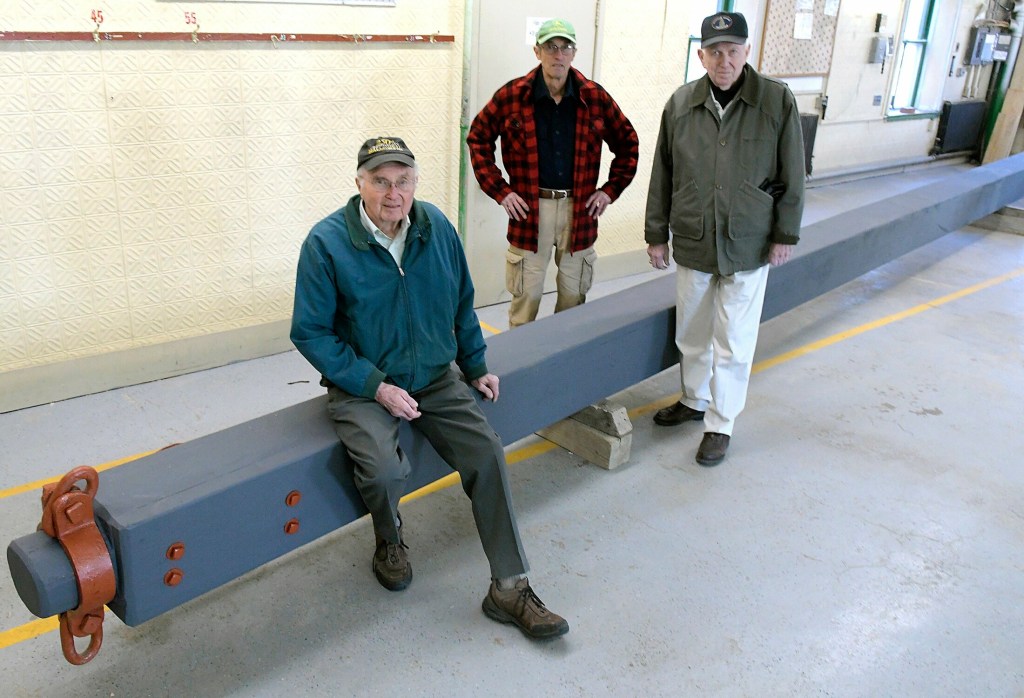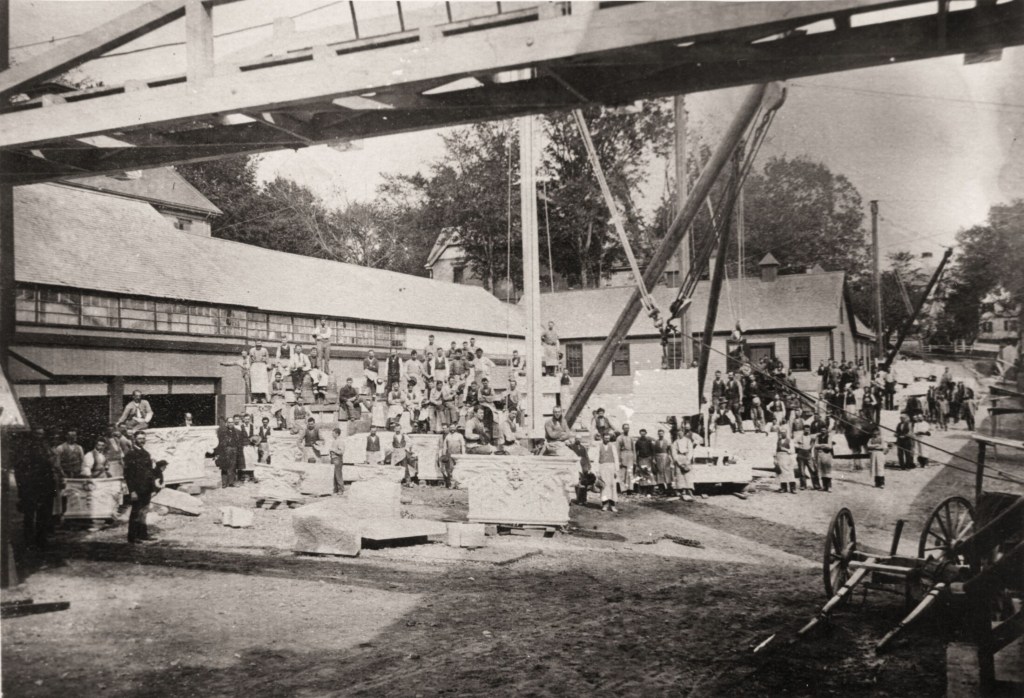HALLOWELL — A nod to the city’s granite legacy has been incomplete — but it will return to its full self in the spring.
The boom of Hallowell’s landmark crane was in need of replacement, so a group of four area men — Al Hague, Sam Webber, Irv Paradis and Gerry Mahoney — worked through the winter to make it happen. A boom is the most identifiable feature of a crane that juts out at an angle from the mast. Webber, Hallowell’s city historian, said the crane — thought to be built around 1885 — needed repair after it was damaged by ants and caused a public safety hazard.
“Ants got into it and ate it up, and it had to be taken down,” he said.
Along with help from Public Works Director Chris Buck, the group used two cranes to unhook and lower the boom from the rest of the crane. As it could not be salvaged, Hague researched and designed a brand new one. The group has worked to construct a one-foot wide, one-foot tall and 37-foot long boom out of pine, laminated it with adhesive and painted it to match the rest of the crane.
“(Ants) are going to have a hard time because we constructed it out of hard yellow pine,” said Webber, a former contractor. “We pretty well encapsulated it.”
“We had to fit each end with irons because there’s great big hinge irons where it goes into … the bottom of the crane,” added Hague, a trained carpenter. “We had to fit the irons and drill the holes. it’s down in the fire station now, all finished.”
Hague has been involved with the crane project since the inception of the Waterfront Advisory Committee, created to oversee development of the city’s northern waterfront, back in 2001. In 2003, Hague, working for Key Bank at the time, informed the city that an expansion of their location on Edison Drive in Augusta uncovered a crane. In 2003, councilors adopted a resolution to have Hallowell accept a donation of the crane. The transaction was complete in 2004. The crane was installed and dedicated a decade later.
The crane once belonged to John Perazzi and Settimo Masciadri, linking it to Hallowell Granite Works. Historian Earle Shettleworth told the Kennebec Journal in 2014 that Hallowell was a major exporter of granite from quarries in the 19th century and early 20th century. Granite from the city was so well regarded that leading American architects used it to construct buildings and monuments along the eastern seaboard.
In November, Hague asked the city to contribute $900 to the $1,500 project. City Manager Nate Rudy said the city did not contribute any money toward the project but did allow the men to use the vacant former fire station on Second Street for the project. Hague said he footed the bill for materials himself.
“It had to be done,” Hague said bluntly about paying for the project. “I don’t know whether (or not) I’m going to get an reimbursement on that.”
Rudy said in an emailed statement that the city was “pleased” to let the men use the former fire station.
“Not only did the space give them ample room to work, but it was great to see the building in use for a public benefit,” he said.
The boom will be mounted back on the crane in the spring, according to Hague.
Sam Shepherd — 621-5666
sshepherd@centralmaine.com
Twitter: @SamShepME
Send questions/comments to the editors.







